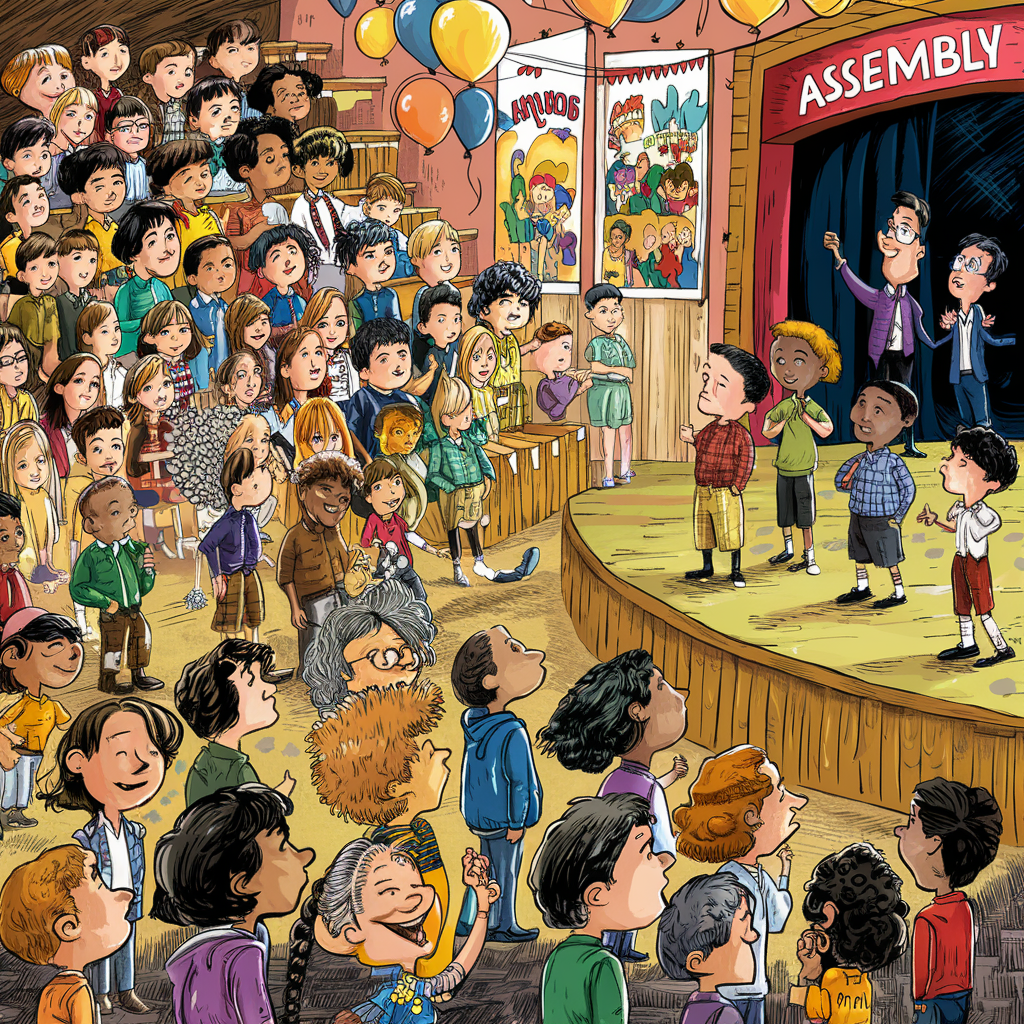School assemblies can be a cornerstone of a student’s educational experience. Done right, they can inspire, educate, and foster a sense of community. However, planning assemblies that students will love requires a balance of entertainment, education, and engagement.
In this guide, we’ll explore how to create memorable school assemblies that students will look forward to.
Know Your Students

The first step in planning a successful school assembly is understanding your audience. Each student body is unique, with diverse interests, backgrounds, and age groups. Conduct surveys or informal polls to gauge what topics, activities, or themes resonate with your students. Knowing what excites them will guide you in creating a program they’ll enjoy.
Age Appropriateness
Tailor the content of your assembly to the age group of your audience. Younger students might enjoy interactive activities and vibrant visuals, while older students might appreciate more sophisticated presentations and discussions. Make sure the language, themes, and activities are suitable for the age group attending.
Choose Engaging Themes

Select themes that are relevant to the students’ lives and interests. Topics such as anti-bullying, environmental awareness, cultural diversity, and mental health can be both educational and engaging. The key is to present these themes in a way that is relatable and interesting.
Seasonal and Special Events
Align your assemblies with seasonal events or significant dates. Celebrating holidays, cultural festivals, or awareness days can add a layer of excitement and relevance. For example, an assembly on Earth Day focused on sustainability practices can be both timely and impactful.
Incorporate Student Participation

Encourage student participation to make the assembly more engaging. This can include student-led presentations, performances, or interactive Q&A sessions. When students are involved, they are more likely to be attentive and invested in the assembly.
Hands-On Activities
Incorporate hands-on activities such as workshops, demonstrations, or interactive games. Activities that require students to move around, collaborate, and participate actively can make the assembly more dynamic and enjoyable.
Use Visual and Audio Aids

Leverage multimedia to make your assembly visually and audibly stimulating. Use videos, slideshows, and music to break the monotony and keep students engaged. High-quality visuals and sound can enhance the overall experience and make the content more memorable.
Live Streaming and Recordings
For larger schools or in times when in-person gatherings are limited, consider live streaming the assembly. Recording the event also allows students who were absent to catch up later and provides a resource for future use.
Invite Guest Speakers

Guest speakers can add a fresh perspective and credibility to your assembly. Invite individuals who have made significant contributions in their fields, such as authors, scientists, athletes, or activists. Hearing from someone who has real-world experience can inspire and motivate students.
Relatable Role Models
Sometimes, the most impactful speakers are those who students can relate to on a personal level. Alumni, local community leaders, or even fellow students with unique experiences can provide relatable and inspiring stories.
Plan and Rehearse
A well-structured plan is crucial for a smooth assembly. Outline the schedule, activities, and responsibilities in detail. Make sure all participants know their roles and the timeline of events. A clear plan helps prevent confusion and ensures that the assembly runs smoothly.
Practice and Rehearsal
Rehearse the assembly to iron out any potential issues. Run through the entire program with all participants to ensure everyone is prepared and comfortable with their roles. This will help minimize surprises and improve the overall flow of the event.
Gather Feedback

After the assembly, gather feedback from students and staff. This can be done through surveys, suggestion boxes, or informal discussions. Understanding what worked well and what didn’t can help you improve future assemblies.
Reflect on the feedback and your observations to identify areas for improvement. Adapt your strategies and make necessary changes to ensure each assembly is better than the last. Continuous improvement is key to maintaining student interest and engagement.
Final Thoughts
By following these steps, you can create assemblies that not only educate and entertain but also inspire and unite your student body. With creativity and strategic planning, school assemblies can become a highlight of the school year, fostering a positive and inclusive school culture.







